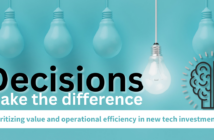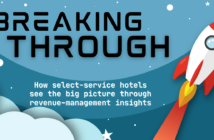by ADAM HARRIS
This is one of my favorite times of the year. The whole community is normally full of bustling bars, restaurants, and boardwalks as millions of tourists flock to San Diego, one of the best summer travel destinations in the world. Sunshine and 72-degree temperatures normally act as a nice reminder that our international headquarters is nicely situated in paradise. Over the past couple of months, as I carefully ventured out of my remote office for the essentials, my beloved travel destination felt eerily quiet.
Every hotelier I have spoken with is asking themselves the same question right now: How many months until we return to normal? Where are my guests coming from throughout the rest of 2020? How is travel going to look in the future? And will my market see enough demand to reach break-even occupancy levels? The unfortunate reality is that most forecasts are predicting 2020 occupancy to fall to levels we haven’t seen since the post-2008 global financial crisis for the rest of the year.
There is zero doubt the travel industry will rebound and eventually even surpass previous demand levels globally, but until then, hotels across the nation will be forced to rely on precariously tight margins to remain open. It is during this period hoteliers will turn to technology-centric operations to provide the best possible guest experience and services. Savvy operators will want to do so with as few partners as possible and, more importantly, with the right partners.
Understanding who our remaining guests are is crucial right now, and in our search for answers, we can look at past large-scale disruptions and historical data to make some predictions regarding the virus’ potential impact. Post-9/11 and 2008 financial crisis data shows us that leisure travel recovered first, followed by corporate travel, with group business returning last.
With various social distancing restrictions in place, it is uncertain if group business will recover as quickly as it did in the past. With much of the country adapted to remote working conditions and Zoom becoming a household name, the corporate business may also be sluggish to return.
GETTING PERSONAL
Knowing your guests in any market condition is critical to future success and the evolution of property services. For example, last year my property may have had a nice even blend of guest profiles, including international, group, corporate, and domestic leisure. Today, government restrictions and even disruptions in flight routes may make visits from a few of these profiles impossible or heavily reduced. The challenge facing the majority of hotel operators right now is they are unable to fully drill down into their data to see who their key guests are. The main reason is that majority of properties globally still use on-premise technology to run their business that rarely connects to the cloud or communicate with other systems without prohibitive costs for most businesses.
Without a cloud-based, unified platform managing the day to day and interacting with other APIs, hotels will not be able to fully understand their guests and ultimate journey to their property. This is relevant to operations today because I can quickly reduce my forecast assumptions given who I know can visit my property, and without this data, I may make decisions that could lead to unnecessary insolvency.
The same can be said for ancillary revenue channels such as F&B, event, and amenities services like spa offerings. Many of these areas will be at the mercy of local legislative requirements, and hotels may have to shift to how they calculate Total RevPar per guest, which will drive operational margins. That said, this also is an opportunity for operators to give their properties some personality by repackaging these into new forms of to-go orders or even providing additional alternative amenities or supplies.
If a hotel can accurately budget for its demand mix and Total RevPar, it is possible, with the right technology, for very limited staff to operate some properties at sub-30-percent occupancy. This may be a necessity for many months to come as some travelers wait for the development of a COVID-19 vaccine to materialize.
HANDS OFF
It’s safe to say that COVID-19 is accelerating guests’ interest in a touchless-stay experience. Travelers already wanted to forego the front desk queues, especially around check-in and checkout. Like airlines have seen with app-driven e-tickets, most consumers want all their information texted or emailed to them without handling a physical key.
Ideally, your hotel should be able to send a message to each guest prior to their stay, offer pre-stay announcements, upsells, and a path to pre-register with access to a digital key for their guestroom. Without technology capable of interfacing with third-party or proprietary tools, it is very difficult to offer this sort of travel experience. Properties like Bode, which operates hotels in Nashville and Chattanooga, TN, are already doing this today, enabling them to be operational considering current circumstances and provide assurance to guests.
This isn’t new and has been around for years, but connectivity has often been limited. Many early adopters of the kiosk check-in experience, such as CitizenM, are still unable to drop their kiosks and go fully mobile due to the limitations of their underlying PMS technology.
Furthermore, if hotels are forced by future mandates to go completely touchless, many could be unable to fulfill this simple requirement, marooned using technology like the example above.
Hoteliers may be concerned that keyless entry removes some of the best touchpoints used to build a guest profile, but they should also consider the importance of removing friction points limiting a positive guest experience. Travelers dislike waiting at the front desk during the check-in process, and there are more effective times and locations on property for face-to-face interactions with guests. By removing and automating check-in, hotels will have more freedom to create stronger touch points while also improving the guest experience.
PREPARE FOR THE UNKNOWN
Travel will return and destinations like San Diego will be bustling again. We don’t know how soon and we don’t know how it will look, but it will undoubtedly return. Hoteliers must be equipped with a toolbox that’s flexible, agile, and cloud based. Pritesh Patel, GM of Hotel Pommier in Iowa, is thinking into the future and converting his larger suites into flexible use, including longer-term vacation rentals. With a unified system, he can easily sell different room layouts and distribute this inventory across channels seamlessly. A hotel’s technology must be ready to help, not hinder, you in a world that is continually changing.
We are not alone in this belief. Even our friends inside the industry’s biggest brands are reacting to the increased need for connected technology. Accor and IHG are both building a unified PMS, central reservations system, and booking engine to provide their hotel partners with stronger control over their properties and guest data.
For independent and boutique hotels, there is no time to wait. As a hotelier, the question will no longer be “Do I have the right tech stack?” Instead it will be “Will my tech partners be relevant in two years? Are my technology partners not only stable but also innovating?”
Hotels have been investing in technology heavily over the past cycle, more than they ever have in the past. Now, it is time for this technology to step in and do what it can to sustain your property until the market stabilizes and ultimately sets you up for future success.
The industry is stronger together, and we are standing by to do our part. ?

Adam Harris is the co-founder and CEO of Cloudbeds, the software solution to help hoteliers and hosts effectively run all aspects of their hospitality business in one place. Today, Cloudbeds is recognized as one of the fastest-growing travel technology companies, powering more than 20,000 hotels, hostels, inns, and vacation rentals in 157 countries. Adam started his career as an investment banker until his love of entrepreneurship and travel pulled him from Wall Street to found multiple technology start-ups.




